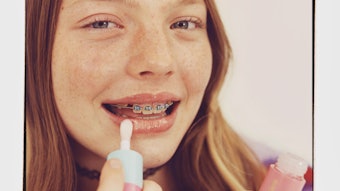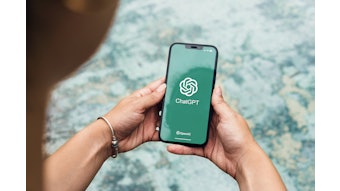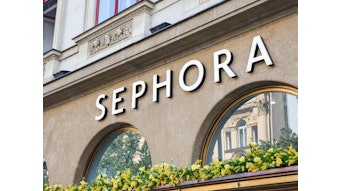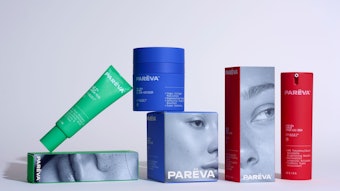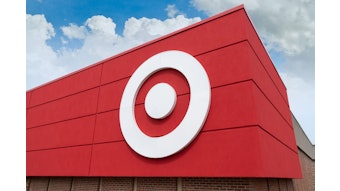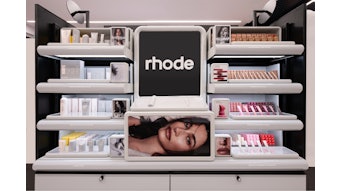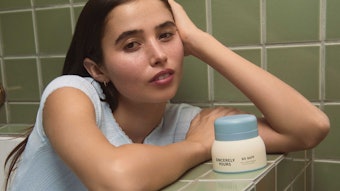- There are clear and successful examples of large companies buying expertise from the professional industry to create two-way leverage—that of existing brands and unique technologies employed by pro products.
- Current trends in anti-aging hair care can be traced to the professional salon sector.
- Education will be a key factor in the success of nutricosmetics.
Professional skin care has been a rich source of inspiration for brands destined for retail shelves, and the benefits touted and expected in pro products dovetail neatly with consumer demand for products that work as well as those used in professional settings. “The larger brands have been most successful at this because their parent companies have deep pockets,” explains Karen Doskow, industry manager, consumer products, Kline.* “Take P&G, for example, it has done a beautiful job with [professional-like products] under the Olay banner. It purchased DDF, a professional brand, about four years ago, and took a lot of what made this brand unique and translated it into its Olay brand.” Regenerist 3 Point Super Serum, containing a super concentrated amino-peptide complex, is Olay’s most recent and recognizable retail product that has benefitted from unique, pro-like technologies.
In fact, P&G’s acquisition of DDF is an excellent example of how some larger companies have bought expertise from the professional industry to create two-way leverage—that of existing brands and that of unique technologies employed by acquired pro products. DDF was created in 1991 by Howard Sobel, a leading New York dermatologist, and was one of the first “physician” skin care brands on the market. The DDF anti-aging products contain proteins and peptides that have been shown to hydrate, tighten and tone the appearance of mature skin.
Under P&G’s ownership, DDF has continued to innovate. For example, DDF’s Restorative Restoring Night Serum boasts a patented technology designed to strengthen the moisture barrier in order to help the cross-linking of elastin for a more youthful appearance.
In 2005, L’Oréal bought U.S. professional skin care brand SkinCeuticals, which marketed its products to dermatologists, plastic surgeons and high end spas. Early in 2010, L’Oréal announced that SkinCeuticals would join forces with Biomedic, its line of clinical corrective procedures and home care products, to strengthen its presence in the professionally dispensed skin care market. L’Oréal also maintains a foot in prescription dermatology with Galderma, which it co-owns with Nestlé.
Marketed within L’Oréal’s active cosmetics division, SkinCeuticals’ focus is on promoting skin health through prevention, protection and correction. The brand is said to be one of the first to provide scientific evidence to support product benefits by publishing clinical studies in medical journals usually reserved for pharmaceutical research.
Doskow believes that SkinCeuticals is a prime example of a brand that has incorporated new technologies from the professional sector. For example, Sheer Physical UV, launched at the end of 2009, incorporates Z-Cote transparent zinc oxide and encapsulated octinoxate, which are two innovative technologies used to create a light texture using only physical filters, making it suitable for sensitive skin.
Likewise, current trends in anti-aging hair care can also be traced to the professional salon sector—with L’Oréal and Schwarzkopf at the forefront of innovation through their professional hair care divisions. L’Oréal Professionnel’s Kérastase Age Premium is an anti-aging hair care range aimed at women over 60 whose hair has become thinner, dry and dull due to hormonal changes. L’Oréal claims this is the first time that hyaluronic acid has been incorporated into a hair product for its ability to rebalance and hydrate the scalp. Well known in both pro and retail skin care, hyaluronic acid is used in injectable wrinkle fillers, notably Restylane, and in skin moisturizing products for its ability to plump tissues. The Kérastase Age Premium range also includes the proprietary pro-supplenium system—based on a calcium derivative, vitamin F and ceramide, which claims to reinforce the hair fiber and protect it from UV rays and free radicals.
Anti-aging hair technology has been used in Schwarzkopf Professional’s BC Bonacure Hairtherapy Time Restore Q10 Plus range. It incorporates a high concentration of co-enzyme Q10 to stimulate the roots to activate the production of keratin. The company’s amino cell rebuild technology claims to strengthen the architecture inside the hair cell and seal the hair cuticle, creating more resilience.
From Well-being to Beauty Within
Nutricosmetics, which straddles the health and beauty sectors, is booming in Asia, but has been slow in gaining acceptance in Western markets. In his trends presentation at the 2010 In-cosmetics event, Leonidas Dokas, industry analyst, Frost & Sullivan, explained that the “beauty from within” concept, or nutricosmetics, has been gaining ground because of the aging population, which has concerns about health and quality of life.
Globally, the category is currently worth $2.1 billion, according to Frost & Sullivan, and overlaps with nutraceuticals (dietary supplements), cosmeceuticals, and cosmetics and toiletries markets. [For analysis of global nutraceutical markets, please read the Euromonitor International report Beauty from Within Lacking Global Acceptance]
Kline has noted that Japan represents the most mature market for nutricosmetics and has the widest range of innovative products. “There is a historical emphasis in Japan on ‘beneficial’ foods that has been incorporated into traditional recipes that are still followed today,” says Doskow. “This is also manifest in a national realization that functional foods actually work.”
However, consumers in other markets are not so sure about the category or product viability, notably U.S. consumers. “Americans tend to be skeptical of the beauty from within concept, partly due to the prevailing cultural emphasis on scientific investigation,” says Doskow.
L’Oréal has had more success pushing the concept in Europe through its Innéov division, another joint venture with food multinational Nestlé. The first launch was Innéov Fermeté, a daily supplement meant to provide the nutrients necessary to prevent wrinkles.
Lycopene (the red carotine pigment found in tomatoes), vitamin C and isoflavones extracted from soy beans are the three main ingredients.
“Nutricosmetics sell well in Europe through the pharmacy channel, partly because the pharmacist is a technically qualified, trusted vendor and personal advisor in that region,” says Doskow.
Education will be a key factor in the success of nutricosmetics, but needs to be backed up by scientific proof if consumers are to be convinced of their value as part of a total beauty regimen. One thing is clear, careful consideration of products used in professional settings and the application of complementary products and technologies in beauty will lead to more opportunities on retail beauty shelves.
* Kline participated at the 2011 In-cosmetics marketing trends presentations in Milan, March 29–31.
Imogen Matthews is a consultant to In-cosmetics. For more information, contact www.imogenmatthews.co.uk.
